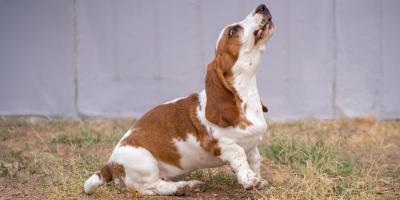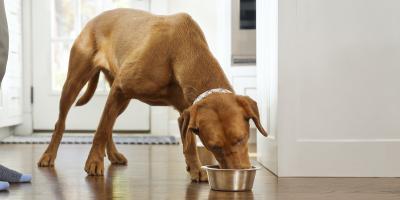What is Splooting and Why Do Dogs Do It?


Splooting is a quirky dog pose that brings a smile to the faces of owners everywhere. Silly and adorable, this particular stretch can give you clues into a dog’s mental and physical state. Here’s what you need to know about splooting, including what splooting means and why dogs sploot.
What Does Splooting Mean?
Splooting refers to a dog position. It’s when a dog lies on their stomach with their hind legs extended behind them and their belly in full contact with the floor. The word “sploot” comes from internet slang, likely from “splat” or “splay,” referring to the flat look of the splooting sleeping position. Dogs can fully sploot with both legs flat out behind them, half sploot with only one leg out, and side sploot, with one or both hind legs stretched out to the side.
Why Do Dogs Sploot?
Splooting is adorable, but your dog is likely doing it for a reason. Your dog sploots because:
- It feels good. For many dogs, it’s a comfortable and relaxing position.
- It’s a hip stretch. Splooting allows your dog to stretch their hips and legs. They might do it after running or walking long distances. Splooting can help relieve tension in a dog’s lower back and hind legs, similar to how humans release their lower backs.
- It feels cool. When a dog’s belly is flat against the floor, they can regulate their body temperature more easily. Your dog might love to sploot on a cool tile floor or hardwood and not carpet.
- They’re flexible. Puppies tend to sploot more than older dogs because they have more flexibility, but dogs of any age can sploot.
Can All Dogs Sploot?
All dogs can sploot; there are no hard and fast sploot rules, and any dog that finds it a comfortable position will do it. Dogs with shorter legs or longer bodies, like Corgis and Dachshunds, typically sploot more than other breeds, but any dog, big or small, can technically sploot. However, bigger dogs might have a harder time getting into a flat belly position.
Dog Breeds That Most Commonly Sploot
Some dog breeds are notorious splooters thanks to their anatomy, but any dog can sploot, and many bigger breeds do it, too. A few popular dog breeds that sploot often include:
- French Bulldogs: French Bulldogs sploot because it’s a comfortable position for their short-legged bodies. It relieves tension in their lower backs.
- Golden Retrievers: Golden Retrievers can sploot to cool themselves off or because it feels comfortable.
- Corgis: Corgis and other breeds with short legs find splooting comfortable.
- Dachshunds: Dachshunds like the way it feels on their short-legged bodies. It’s easy for them to get into that position.
- Chihuahuas: Small dogs like Chihuahuas enjoy splooting. It’s a natural position for them and easy for them to get in and out of.
- Basset Hounds: Dogs that run a lot like Basset Hounds appreciate splooting because it allows them to stretch their legs and backs.
- Pugs: Pugs find the sploot position comfortable, and it helps them cool down quicker.
- Newfoundlands: Newfoundlands, which have thick, water-resistant coats, might sploot to regulate their body temperature.
- Bernese Mountain Dogs: Thick-coated dogs like Bernese Mountain Dogs sploot to cool themselves down.
- Huskies: Huskies might sploot to cool themselves down during warmer months.
While these breeds might sploot more often than other breeds, there is no guarantee that owning one of these dogs will result in lots of splooting. Each dog will have preferences.
Is Splooting Bad for Dogs’ Hips?
The act of splooting itself is not bad for a dog’s hips. It’s a natural and harmless position that they might find to be more comfortable, and it could mean that your dog has healthy, flexible hip joints if they can get into that position.
If your dog is splooting and has other symptoms, there might be something else going on. If your dog is not eating, is crying or howling in pain, is limping, has stiffness, or is having difficulty getting up from a sploot, call your vet. It could be a paw pad injury or something bigger, like arthritis or hip dysplasia – conditions that happen as dogs age.
Conclusion
A sploot is usually a sign your dog is relaxed and comfortable. Some breeds are more likely to sploot, although splooting results may vary based on the dog’s preferences and age. So long as your dog is splooting and able to move around comfortably, there’s no reason to worry. If your dog is exhibiting other symptoms like loss of appetite or limping, it might be time to check in with your vet.
For more expert tips on dog behavior, explore our other understanding dogs articles.
Related articles

Reward Yourself with myPurina
Earn and redeem rewards for Purina products with the myPurina app.



